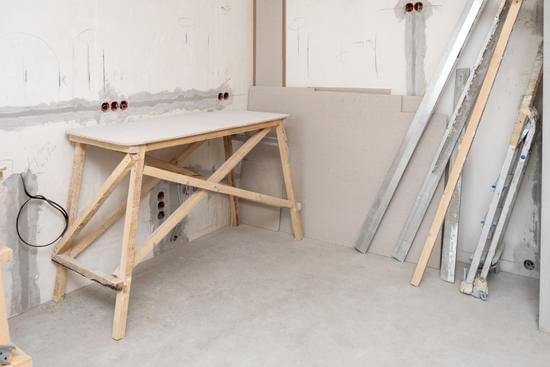With the incredible advancements in technology, home theatres have become increasingly popular among individuals who want to experience immersive entertainment within the comfort of their own homes. However, while many people focus on investing in high-quality visual equipment, they often overlook the importance of sound quality in creating a truly captivating home theatre experience.
In this article, we will explore various tips and techniques to improve the sound quality in your home theatre setup. From understanding how the room affects sound to choosing the right speaker system, positioning and placement, and calibrating audio settings for a perfect sound balance, we will cover every aspect necessary to elevate your audio experience.
When it comes to creating an immersive audio experience in your home theatre, it is essential to understand how different factors can impact sound quality. The size and shape of your room, along with its furnishings and architectural elements, can significantly affect how sound waves travel and interact within the space. By understanding these acoustics principles, you can make informed decisions about speaker placement and invest in room treatments that enhance sound quality.
Whether you are new to setting up a home theatre or looking to improve your existing setup, this article will provide you with valuable insights and practical tips on how to enhance the sound quality in your home theatre. By following these guidelines and implementing the suggested improvements, you can create a truly immersive audio environment that will enhance your overall viewing experience.
So let’s dive in and discover how you can achieve superior sound quality for your home theatre system.
Understanding Acoustics
When it comes to creating an immersive and enjoyable home theatre experience, one crucial factor to consider is the acoustics of the room. The room itself plays a significant role in how sound travels and is perceived, ultimately affecting the overall sound quality. To enhance your home theatre’s audio performance, it is essential to understand how the room affects sound quality and take steps to optimize it.
One key consideration when it comes to room acoustics is the size and shape of the space. Larger rooms tend to have more reverberation or echo, while smaller rooms may suffer from excessive reflections. This can lead to muddled or distorted sound.
To counteract these issues, you can use acoustic treatments such as absorption panels or diffusers strategically placed around the room. Absorption panels help absorb excess sound energy, reducing echoes and reflections, while diffusers scatter soundwaves evenly across the room.
Another aspect to consider is the materials used in your theatre room’s construction. Hard surfaces like glass windows, wooden floors, or bare walls can cause sound waves to bounce around and create unwanted echoes and standing waves.
On the other hand, softer materials like carpets, curtains, or upholstered furniture can help absorb some of these reflections and improve overall sound clarity. It may be worth exploring options for adding acoustic treatment materials or using rugs and drapes in your home theatre space.
Additionally, furniture placement can significantly impact sound quality in a home theatre setting. Large pieces of furniture like couches or bookshelves can act as natural sound absorbers by breaking up sound reflections that would otherwise bounce off flat walls. Placing bookshelves along sidewalls can help diffuse soundwaves while adding some absorption properties.
Choosing the Right Speaker System
When it comes to improving the sound quality in a home theatre, one of the most important factors to consider is choosing the right speaker system. The speaker system you choose will have a significant impact on the overall audio experience, so it’s essential to make an informed decision. Here are some tips and considerations to help you select the right speaker system for your home theatre:
- Determine Your Budget: Before starting your search for a speaker system, it’s crucial to establish your budget. Speaker systems can range from affordable options to high-end setups, so knowing how much you’re willing to spend will narrow down your choices.
- Consider Room Size: The size of your room plays a crucial role in determining the type and configuration of speakers that will work best. Larger rooms may require more powerful speakers or additional subwoofers, while smaller spaces can be adequately served by compact or bookshelf speakers.
- Decide on Speaker Configuration: When choosing a speaker system, you’ll need to decide whether you want a stereo setup or a surround sound system. A stereo configuration consists of two speakers and provides excellent sound quality for music and movies, while a surround sound setup includes multiple speakers strategically placed around the room for an immersive audio experience.
- Understand Speaker Specifications: Pay attention to key specifications like frequency response, impedance, sensitivity, and power handling. These factors give you insight into how loud and clear the speakers can produce sound and how compatible they are with your amplifier or receiver.
- Quality of Sound Reproduction: It’s essential to listen to different speaker systems before making a final decision. Visit audio stores or read reviews online to get an idea of how different brands and models reproduce sound quality accurately.
- Compatibility with Other Components: Ensure that the speaker system you choose is compatible with other components of your home theatre setup such as an AV receiver or amplifier.
By considering these tips and taking into account your specific requirements and preferences, you’ll be able to choose a speaker system that enhances the sound quality of your home theatre and provides an immersive audio experience. Remember to compare different brands and models, read reviews, and listen to demos before making a final decision.
Positioning and Placement
Optimizing the placement of speakers in your home theatre is crucial for achieving enhanced sound quality. In this section, we will explore various tips and considerations to help you position your speakers effectively.
Firstly, it is important to consider the ideal distance between the speakers and the listening area. The general recommendation is to position the front speakers at an equal distance from each other, forming an equilateral triangle with the main seating position. This creates a balanced soundstage and allows for accurate imaging.
Another important factor to consider is speaker height. For floor-standing or bookshelf speakers, it is recommended to have them positioned at ear level when seated. This ensures that sound reaches your ears directly without any obstacles, providing a clear and immersive audio experience.
Furthermore, placing surround speakers in the right locations can greatly enhance your home theatre experience. The ideal placement for surround speakers is slightly behind and above the main seating area. This setup creates a sense of envelopment and immerses you in a three-dimensional sound field.
| Speaker Type | Ideal Placement |
|---|---|
| Front Speakers | Form an equilateral triangle with main seating position |
| Floor-standing/Bookshelf Speakers | Positioned at ear level when seated |
| Surround Speakers | Slightly behind and above main seating area |
Lastly, it is worth mentioning that experimenting with speaker placement can often lead to better results. Minor adjustments such as moving speakers closer or farther apart can make a noticeable difference in sound quality. Additionally, using tools such as speaker placement apps or consulting professional home theatre installers can provide invaluable assistance in optimizing the positioning of your speakers.
By following these tips and considering the placement guidelines outlined above, you can ensure that your speakers are positioned optimally for enhanced sound quality in your home theatre.
Calibrating the Audio
Calibrating the audio settings in your home theatre is crucial for achieving a perfect sound balance. Without proper calibration, even the most expensive speaker system may not deliver the best sound quality. In this section, we will discuss some tips and techniques for calibrating your audio to ensure an optimal listening experience.
Understanding Calibration
Calibration involves adjusting various audio settings such as speaker levels, crossover frequencies, and equalization to achieve a balanced sound output. This process ensures that the sound from each speaker reaches your ears at the same time and volume, creating a cohesive and immersive audio experience. It also helps in fine-tuning the frequency response of each speaker to compensate for any room anomalies or speaker characteristics.
Utilizing Auto Calibration Systems
Many modern home theatre receivers come equipped with auto calibration systems that simplify the calibration process. These systems use built-in microphones to analyze the acoustic properties of the room and automatically adjust the audio settings accordingly. Auto calibration systems take into account factors such as room size, speaker placement, and listening position to optimize sound quality.
To utilize these auto calibration systems, simply follow the on-screen instructions provided by your home theatre receiver. The system will generate test tones and measure their responses using its built-in microphone. Once completed, it will make adjustments to speaker levels, distances, and other parameters to achieve an optimal sound balance.
Manual Calibration Options
For those who prefer a more hands-on approach or have older home theatre receivers without auto calibration systems, manual calibration options are available. These options allow you to manually adjust settings such as channel levels, crossover frequencies, and equalization to achieve desired results.
To calibrate manually, start by playing a reference track or movie scene with known audio characteristics. Use a sound level meter or your own ears to determine if all speakers are producing sound at consistent volume levels. Adjust individual channel levels until they match each other, ensuring that the sound reaches your ears at the same volume level.
Next, set the crossover frequencies for your speakers. These frequencies determine which frequencies are sent to specific speakers or subwoofers. Setting appropriate crossover frequencies prevents overlap and distortion between speakers, resulting in a seamless transition of sound.
Lastly, consider using an equalizer to fine-tune the frequency response of your speakers. An equalizer allows you to boost or cut specific frequencies to compensate for room anomalies or personal listening preferences. Experiment with different equalization settings until you achieve a balanced and pleasing sound.
By calibrating the audio settings in your home theatre, you can ensure that every movie, show, or music track is experienced at its best potential. Whether utilizing auto calibration systems or manually adjusting settings, achieving a perfect sound balance will greatly enhance your home theatre experience.
Soundproofing
Good sound quality in a home theatre relies not only on the speaker system and audio settings, but also on minimizing external noise interference. Soundproofing the room can greatly enhance the overall viewing and listening experience, allowing you to fully immerse yourself in your favorite movies or music without distractions. In this section, we will explore some strategies to effectively soundproof your home theatre.
One effective method of soundproofing is by adding insulation materials to the walls, ceilings, and floors. These materials help reduce sound transmission by absorbing and damping vibrations. Common insulation options include fibreglass batts, acoustic foam panels, and mass-loaded vinyl barriers. It is important to carefully select the right materials based on their Sound Transmission Class (STC) rating, which indicates their ability to block sound.
Another strategy for reducing noise interference is sealing any gaps or cracks in the room. Even small openings can allow significant amounts of external noise to penetrate into the space. Use caulk or weather-stripping to seal gaps around windows, doors, electrical outlets, and baseboards. Pay attention particularly to air vents or ducts which can often be overlooked sources of noise leakage.
In addition to insulation and sealing, utilizing thick curtains or heavy drapes can help in blocking outside noise while also improving the acoustics within your home theatre. The dense fabric absorbs sound waves and prevents them from bouncing off hard surfaces such as windows. For even better results, consider using curtains specially designed for soundproofing purposes which often come with additional layers of material for maximum noise reduction.
| Soundproofing Strategy | Description |
|---|---|
| Insulation | Add insulation materials like fibreglass batts or acoustic foam panels to absorb vibrations and reduce sound transmission. |
| Sealing | Seal gaps or cracks in the room using caulk or weather-stripping to stop external noise from entering the space. |
| Thick Curtains/Heavy Drapes | Utilize dense fabric curtains or heavy drapes to block outside noise and improve acoustics in the home theatre. |
By implementing these soundproofing strategies, you can create a quieter environment within your home theatre, allowing you to fully enjoy the immersive experience of high-quality sound without unwanted external distractions.
Room Treatments
Room treatments play a crucial role in improving the sound quality in a home theatre. By using absorption and diffusion techniques, you can enhance the overall audio experience and create a more immersive environment. This section will explore different strategies for room treatments that can significantly impact the sound quality in your home theatre.
Absorption
One of the key aspects of room treatments is managing sound reflections. Uncontrolled reflections can lead to echoes, reverberation, and an overall muddy sound. Absorption materials are used to reduce these unwanted reflections by absorbing the sound energy instead of bouncing it back into the room.
There are several options available for absorption materials, including acoustic panels, bass traps, and diffusers. Acoustic panels are typically made of dense material with a soft surface to absorb sound waves effectively. These panels can be placed on walls, ceiling, or even behind speakers to minimize unwanted reflections.
Bass traps, on the other hand, target low-frequency sounds that tend to accumulate in corners of a room. They are designed to absorb low-frequency energy and help balance out the bass response. Diffusers are another type of absorption material that scatter sound waves instead of absorbing them directly. By breaking up strong reflections, diffusers help create a sense of spaciousness and naturalness in the audio playback.
Diffusion
While absorption helps control early reflections, diffusion is essential for managing late reflections. Late reflections refer to sounds that bounce off surfaces after traveling some distance within the room. Diffusion materials scatter these reflections in multiple directions rather than allowing them to build up at specific points.
Diffusers come in various designs, shapes, and sizes – ranging from simple quadratic diffusers to more complex designs like binary arrays or skyline diffusers. Their objective is to break up these late reflections and distribute them more evenly throughout the room. This helps create a more balanced acoustic environment where each listener perceives consistent sound quality regardless of their position in the room.
Combining Absorption and Diffusion
To achieve optimal sound quality, a combination of absorption and diffusion is often recommended. While absorption materials control early reflections and excessive reverberation, diffusion materials manage late reflections to create a sense of spaciousness and natural sound. By employing these room treatments strategically, you can improve the overall audio experience in your home theatre and enjoy a more immersive movie-watching or music-listening experience.
Upgrading Audio Cables and Connections
When it comes to improving the sound quality in your home theatre, upgrading audio cables and connections can play a significant role in maximizing signal clarity. While many people focus on investing in high-quality speakers and audio systems, the importance of using proper cables and connections should not be overlooked.
One important consideration when upgrading audio cables is the use of digital cables versus analog cables. Digital cables, such as HDMI or optical cables, are ideal for transmitting digital signals without any loss or interference.
These types of cables are commonly used to connect devices like Blu-ray players or game consoles to your home theatre system. On the other hand, analog cables, such as RCA or XLR cables, are better suited for transmitting analog signals, typically used for connecting older devices that do not have digital outputs.
In addition to choosing the right type of cable, it is crucial to pay attention to the quality of the cable itself. Low-quality or improperly shielded audio cables can introduce unwanted noise and interference into your system, leading to a degraded sound quality. When selecting audio cables for your home theatre, consider investing in high-quality options with proper shielding and insulation to minimize signal degradation.
To maximize signal clarity even further, it is also essential to ensure that all connections are secure and tight. Loose connections can result in signal loss or intermittent disruptions in sound transmission. Regularly inspect your audio connections and ensure they are properly inserted and tightened.
By upgrading your audio cables and connections with high-quality options and ensuring secure connections, you can significantly enhance the overall sound quality in your home theatre setup. With improved signal clarity, you will experience a more immersive and enjoyable movie-watching or gaming experience right from the comfort of your own home theater room.
Investing in a Soundbar or Surround Sound System
When it comes to enhancing the sound quality in your home theatre, one of the most effective and popular options is to invest in a soundbar or surround sound system. These audio devices can greatly elevate your home theatre experience by providing immersive and high-quality sound.
A soundbar is a compact and sleek speaker system that is designed to sit below or above your television. Despite its small size, a soundbar can deliver powerful and clear audio. It typically contains multiple built-in speakers that are positioned at different angles to create a wider and more detailed soundstage.
On the other hand, a surround sound system consists of multiple speakers placed strategically around your room. This setup creates a three-dimensional audio experience by producing sounds from different directions. By using rear speakers and a dedicated subwoofer, a surround sound system can reproduce deep bass frequencies and enhance the overall richness of the audio.
| Soundbar | Surround Sound System |
|---|---|
| A compact speaker system that can be placed above or below the television. | A system consisting of multiple speakers positioned strategically around the room. |
| Delivers powerful and clear audio with built-in speakers positioned at different angles. | Creates a three-dimensional audio experience with sounds coming from various directions. |
| Ideal for smaller spaces or those looking for simplicity and minimalism. | Recommended for larger rooms or individuals seeking a more immersive audio experience. |
Both soundbars and surround sound systems have their own advantages depending on your preferences, room size, and budget. Soundbars are often preferred for smaller spaces or individuals looking for simplicity and minimalism, as they offer a clutter-free solution with fewer wires and speakers to deal with. On the other hand, surround sound systems are recommended for larger rooms or individuals seeking a more immersive audio experience.
Regular Maintenance and Troubleshooting
Maintaining consistent sound quality in your home theatre system is essential to enjoy an immersive entertainment experience. Over time, various factors can affect the performance of your audio setup, resulting in distorted or subpar sound. However, with regular maintenance and troubleshooting, you can ensure that your home theatre continues to deliver optimal sound quality. In this section, we will discuss some important tips and techniques for maintaining and troubleshooting your audio system.
Clean and Dust Your Speakers Regularly
Dust accumulation on speakers can affect their performance by obstructing sound output and reducing overall clarity. Therefore, it is crucial to clean and dust your speakers regularly to maintain their optimal functioning. Use a soft cloth or a microfiber duster to gently remove dust from the speaker grilles and surfaces. Avoid using harsh cleaning agents or spraying directly onto the speakers as it could damage them.
Check and Secure Your Audio Connections
Loose or faulty audio connections can result in poor sound quality or intermittent audio issues in your home theatre system. To ensure consistent sound quality, regularly inspect all audio connections, including cables and plugs, to make sure they are securely attached. If you notice any loose connections or damaged cables, replace them as necessary to maintain uninterrupted signal flow.
Update Firmware and Software
Most modern home theatre systems have firmware or software that can be updated periodically to enhance performance and fix any bugs or compatibility issues. Check for updates from the manufacturer’s website or through the system’s settings menu regularly. Updating firmware or software can improve compatibility with new devices, add new features, and address any known issues that might negatively impact sound quality.
Regularly Test Your Speakers
Periodically testing your speakers allows you to identify any potential problems early on and take appropriate action. Use a test tone or play familiar audio content to assess each speaker’s performance individually. Listen for any buzzing, distortion, or inconsistency in sound output. If you notice any issues, consult the system’s user manual or contact technical support for guidance on how to troubleshoot and resolve the problem effectively.
By following these regular maintenance tips and troubleshooting techniques, you can ensure consistent sound quality in your home theatre system. Remember to clean and dust your speakers regularly, check and secure your audio connections, update firmware and software as needed, and periodically test your speakers for optimal performance. Taking care of your audio setup will help you enjoy the best sound quality possible and fully immerse yourself in your favorite movies, music, and games.
Conclusion
In conclusion, achieving the best sound quality in your home theatre requires a combination of various factors and considerations. By understanding the importance of sound quality and how it can enhance your overall viewing experience, you can take steps to optimize your setup and create an immersive audio environment.
One crucial aspect to consider is the room itself and its impact on sound quality. Understanding acoustics and how the room affects sound can help you make informed decisions regarding speaker placement and room treatments. Proper positioning and placement of speakers is also key in optimizing sound performance, as it allows for enhanced surround sound effects and balanced audio output.
Additionally, calibrating the audio settings within your home theatre system is essential for achieving a perfect sound balance. Taking the time to adjust equalizer settings, speaker levels, and other audio parameters will provide a more accurate representation of the intended sound mix.
Investing in high-quality audio cables and connections can further maximize signal clarity and minimize potential interference or distortion. Upgrading to a soundbar or surround sound system can elevate your home theatre experience by providing a more immersive audio output with enhanced spatial effects.
Lastly, regular maintenance and troubleshooting are crucial to maintaining consistent sound quality over time. Ensuring that all components are clean, properly connected, and functioning optimally will help avoid any potential degradation in audio performance.
By following these tips and considering the various aspects outlined in this article, you can enjoy the best possible sound quality in your home theatre. Remember that achieving optimal audio performance is an ongoing process that may require adjustments based on personal preferences or changes in your setup. With dedication and attention to detail, you can create a truly immersive listening experience that complements your visual enjoyment of movies, shows, and games.
Frequently Asked Questions
How can I make my sound system sound better?
To make your sound system sound better, there are a few things you can consider. Firstly, ensure that your speakers are positioned correctly. They should be placed at an optimal distance from each other and the listener, ideally forming an equilateral triangle. Additionally, check if there are any obstructions or reflections in the room that may be affecting the sound quality.
Acoustic treatments like adding curtains or rugs can help absorb unwanted echoes or reverberations. Another aspect to focus on is the audio settings of your system. Fine-tuning the equalizer and adjusting individual volume levels can make a significant difference in achieving a balanced and immersive sound experience.
Which sound mode is best for home theater?
The best sound mode for a home theater largely depends on personal preferences and the type of content being enjoyed. However, many home theater enthusiasts find that the surround sound mode enhances their viewing experience by providing a more immersive feel to movies, TV shows, and games.
A good option is often Dolby Digital or DTS surround sound modes, as they offer multi-channel audio reproduction that creates a 3D-like environment with sounds coming from different directions. It’s worth experimenting with different modes to see which one suits your preferences and complements your specific setup.
How do I fix bad sound quality?
Fixing bad sound quality requires troubleshooting both hardware and software aspects of your audio setup. Start by checking all physical connections and cables to ensure they are secure and undamaged. Sometimes faulty connections can result in poor audio quality. Next, review your device’s audio settings to ensure they align with your desired output format (e.g., stereo or surround sound).
Adjusting settings such as sample rate, bit depth, or frequency response might also improve audio quality if set incorrectly previously. Additionally, experiment with various equalizer settings to find an ideal balance between different frequencies for clear and well-rounded audio playback. If necessary, consider updating drivers or reinstalling software associated with your audio devices to eliminate any compatibility issues that could be affecting sound quality.

I’m thrilled to have you here as a part of the Remodeling Top community. This is where my journey as an architect and remodeling enthusiast intersects with your passion for transforming houses into dream homes.





